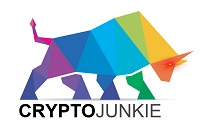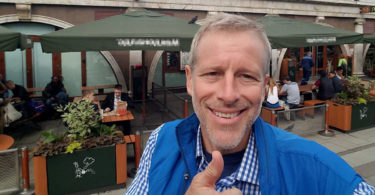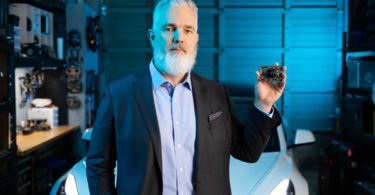Introduction
Akero Therapeutics (NASDAQ: AKRO) is a clinical-stage biotech focusing on a single lead drug, efruxifermin (EFX), for NASH (recently re-termed MASH). Despite its challenges, Wall Street’s official stance on AKRO has been optimistic – as of early 2025, seven analysts rate it “Buy” with only one “Hold” and none calling it a outright “Sell” ([1]). The stock, however, has seen extreme volatility. Notably, AKRO plunged ~66% in one day in October 2023 after a mid-stage trial failed to meet its primary endpoint ([2]). That collapse – from the high-$40s to ~$16 ([2]) – revealed serious concerns lurking beneath bullish ratings. This report digs into Akero’s fundamentals – its dividend (or lack thereof), financial leverage, valuation, and the risks and red flags that analysts gloss over – to uncover “what they won’t say” about why AKRO may warrant caution.
No Dividends: Policy, History & Yield
Akero has never paid a dividend** and does not plan to in the foreseeable future ([3]). Management explicitly states that it intends to retain all earnings (currently losses) to fund R&D, so any shareholder returns must come from stock price appreciation ([3]). In fact, the company’s loan covenants forbid paying dividends while debt is outstanding ([3]). The dividend yield is effectively 0%, and common income metrics like FFO or AFFO simply don’t apply – as a pre-revenue biotech, Akero has no operating cash flows or funds from operations to distribute. Instead, Akero consistently generates net losses (over $151 million in 2023 alone) and expects to continue losing money for the foreseeable future ([3]). Investors in AKRO should thus be seeking capital gains, not income – a profile typical for high-risk, high-reward biotech stocks.
Leverage, Debt Maturities & Coverage
Unlike many biotechs that rely solely on equity financing, Akero has taken on venture debt. In June 2022, it entered a term loan facility with Hercules Capital for up to $100 million (expanded to $150 million in 2024) ([3]) ([3]). As of early 2024 Akero had drawn $35 million under this loan ([3]) ([3]). The loan bears a hefty interest rate (~12%) – specifically, the higher of 7.65% or Prime + 3.65% ([3]). Fortunately, payments were interest-only until July 2025 (extended from an initial mid-2024 milestone) ([3]), giving Akero breathing room during clinical trials. Principal repayment starts afterward, with the loan maturing on January 1, 2027 ([3]).
Akero’s debt carries customary covenants that restrict riskier moves – for example, Akero cannot incur more debt, pay dividends, or encumber assets under the Hercules agreement ([3]). It also must maintain a healthy cash balance relative to the loan or risk default ([3]) ([3]). These terms protect the lender but effectively ensure Akero will preserve cash – which aligns with shareholders’ interests too. Importantly, Akero’s interest coverage is not a concern in the near term. The company’s interest expense in 2023 was roughly $3.1 million ([3]), while its cash and investments generate far more interest income (over $24 million in 2023 amid higher rates) ([3]). In other words, Akero earned net interest income last year, thanks to its large cash pile. With no revenue yet, traditional EBITDA-based coverage ratios are meaningless, but Akero’s $569 million cash reserve at 2023 year-end dwarfed its annual interest costs ([3]) ([3]). As long as Akero’s trials stay on track, its cash should comfortably cover debt service. And if results falter, covenants give lenders recourse – a default could accelerate the loan, potentially forcing Akero to halt programs or seek emergency funding ([3]) ([3]). This low-debt, high-cash profile means solvency isn’t an immediate worry, but it underscores how vital Akero’s cash runway is to surviving long enough to (hopefully) commercialize EFX.
Cash Runway and Financing
Akero’s balance sheet is a rare bright spot. After positive data in early 2025, the company fortified its cash reserves with a large equity offering. As of December 31, 2024, Akero held $797.8 million in cash, equivalents and marketable securities ([4]). In January 2025 it raised an additional $402.5 million gross via a follow-on stock sale ([4]), boosting pro forma cash above $1.1 billion. Thanks to this capital influx, management now believes it has funding into 2028 for its current operating plans ([4]). This is a substantial runway, considering that a year prior they only guided funding “into 2026” ([5]) ([5]). The dilutive fundraising – which came on the heels of a major clinical success – shows Akero is shrewdly stockpiling cash while it can at favorable prices. It also means the company should largely avoid new debt and minimize bankruptcy risk through the Phase 3 program.
That said, Akero is still expected to burn hundreds of millions before any product revenue. R&D spending nearly doubled to $141.8 million in 2023 as multiple trials ramped up ([5]), and total operating losses in 2024 jumped to $285 million ([4]). With three Phase 3 trials now underway (described below), annual cash burn will remain high. Akero openly acknowledges it will “require additional funding” to fully complete EFX’s development and future commercialization ([3]) ([3]). In other words, even with ~$1.2 billion banked, the company may need more money by the time EFX reaches the market. If equity markets are unfavorable then, Akero could face tough choices – however, its recent raise significantly de-risks the next few years. For now, cash is plentiful: Akero actually has “more cash than debt” on its books, a strong financial position for a biotech ([6]). The real question is whether that cash will be enough to carry EFX over the finish line.
Valuation and Comparables
Valuing Akero is tricky because traditional metrics (P/E, P/B, P/FFO) are either not meaningful or backward-looking. The company remains pre-revenue, so it trades on potential rather than current fundamentals. At a recent share price in the high-$40s to $50s, AKRO’s market capitalization is roughly $3.5–4.0 billion (after the early-2025 share issuance). This lofty valuation reflects high expectations for efruxifermin’s success. Analysts are broadly bullish: the consensus 12-month price target was around $72–76 per share as of mid-2025 ([6]), implying they see ~50% upside from current levels. Price targets range from about $60 on the low end to over $100 at the bull extreme ([6]). In other words, the Street is pricing Akero as a future winner, not a speculative long-shot.
It’s informative to compare Akero to peers in the NASH race. Madrigal Pharmaceuticals – which achieved the first-ever NASH drug approval in March 2024 – has a similar multi-billion valuation. Madrigal’s drug resmetirom (brand name Rezdiffra) got FDA approval as a daily pill for fibrosis due to NASH, and launched at a hefty $47,400 per year list price ([7]). That approval was historic for the field, and it set a benchmark for both efficacy and pricing. Akero’s EFX, if approved, would likely command a comparable price as a potentially more potent therapy for advanced fibrosis. Another peer, 89bio (NASDAQ: ETNB), is developing a competing FGF21 analog for NASH. 89bio’s candidate is a step behind EFX in clinical development and was hit by the same sector turbulence – its stock fell in sympathy when Akero’s trial stumbled ([2]). Finally, it’s worth noting big pharma’s positioning: Novo Nordisk had been testing its own FGF21 analog (zalfermin), but Novo discontinued zalfermin in 2023 after it failed to beat placebo in a Phase 2 MASH trial ([6]) ([6]). That failure knocked out a would-be rival and, according to Morgan Stanley, leaves EFX as “the most advanced FGF21 analog” in NASH with potential best-in-class efficacy ([6]) ([6]). Novo’s exit, plus the dominance of GLP-1 drugs in obesity treatment, may consolidate more investor attention onto Akero – but it also raises a critical question (discussed later) about how EFX will compete or combine with GLP-1 therapies.
What’s inside the FREE 2025 Wealth Protection Guide?
 Why physical gold outlasts economic storms
Why physical gold outlasts economic storms How to move 401(k)/IRA/TSP into a Gold IRA tax-free
How to move 401(k)/IRA/TSP into a Gold IRA tax-free Privatize your retirement from market & government risk
Privatize your retirement from market & government risk

Given its lack of earnings, Akero’s valuation rests on the estimated future value of EFX. Investors are effectively betting that EFX can capture a meaningful share of the multi-billion dollar NASH market within a few years of launch. If EFX falters in Phase 3 or faces a curtailed market uptake, the downside could be severe – AKRO has little else to fall back on. On the flip side, a successful Phase 3 and timely approval could make Akero an attractive acquisition target for a large pharma hungry for a NASH franchise. With one competitor’s drug already approved and others (like 89bio’s) in the wings, the next couple of years will determine whether Akero’s valuation is justified or built on biotech hype. For now, Wall Street appears to be valuing promise over proof, which leaves little margin for error.
Efruxifermin Pipeline Status
EFX is Akero’s sole drug candidate, but it’s being evaluated across multiple trials and patient populations. Understanding where EFX stands helps frame Akero’s risk/reward profile:
– Pre-Cirrhotic NASH (F2–F3 fibrosis): Akero reported positive Phase 2b results (the HARMONY study) in 2022, showing significant fibrosis improvement in non-cirrhotic NASH patients ([2]). Building on that, the company launched two Phase 3 trials in late 2023: SYNCHRONY Histology and SYNCHRONY Real-World ([5]) ([5]). The Histology study will treat F2-F3 NASH patients for 52 weeks, aiming to demonstrate ≥1-stage fibrosis regression plus NASH resolution – an endpoint that could support accelerated approval ([5]) ([5]). Initial 52-week data from this trial isn’t expected until the first half of 2027 ([6]) ([6]), underscoring the long road ahead. The Real-World study is a large safety trial (601 patients) with non-invasive diagnostics, meant to bolster the safety database for FDA ([5]) ([5]). Akero completed enrollment for the blinded portion of Real-World in January 2025 ([4]) ([4]), and plans to report top-line results from it by the first half of 2026 ([6]) ([6]).
– Cirrhotic NASH (F4 fibrosis): This is the toughest stage – and where Akero had a setback. The Phase 2b SYMMETRY study in compensated cirrhosis (F4) reported interim 36-week results in Oct 2023 that failed to meet the primary endpoint (fibrosis improvement) ([2]) ([2]). Only ~23% of EFX patients saw fibrosis regression by 36 weeks vs 14% on placebo, a non-significant difference ([2]). Investors punished AKRO’s stock accordingly, realizing that reversing cirrhosis is an extremely high bar ([2]) ([2]). However, Akero urged patience: EFX did show highly significant NASH resolution rates (~60% vs 26% placebo) and other liver injury marker improvements by week 36 ([8]) ([8]). The company believed a longer dosing duration could yet prove EFX’s benefit ([2]) ([2]). Indeed, by 96 weeks of treatment, EFX delivered. In late January 2025, Akero announced “unprecedented” results: 39% of cirrhotic patients on high-dose EFX had ≥1 stage fibrosis improvement (no NASH worsening) vs 15% of placebo – a statistically significant 24% absolute benefit ([4]) ([4]). Even using a conservative ITT analysis (counting dropouts as failures), EFX’s fibrosis response rate was 29% vs 12% placebo (p=0.03) ([4]). Remarkably, in a subgroup not on GLP-1 drugs, 45% of EFX patients reversed cirrhosis (downstaging fibrosis) vs 17% for placebo ([4]) – suggesting EFX’s effect was genuine and not just due to concurrent semaglutide use. These 96-week SYMMETRY results are a game-changer for Akero: they validate EFX’s ability to regress cirrhosis over time, something never before shown in NASH. Based on FDA feedback, Akero is now running a Phase 3 SYNCHRONY Outcomes trial in F4 patients ([5]). This trial, started in late 2024, will measure both histological fibrosis improvement at 96 weeks and actual clinical outcomes (like progression to liver failure events) over a longer term ([5]) ([5]). Positive Phase 3 results in F4 could eventually support full approval in the cirrhosis indication – a massive unmet need.
In summary, EFX’s development is in high gear: two Phase 3 studies for earlier-stage NASH are ongoing (one for efficacy, one for safety), and one Phase 3 for cirrhosis is enrolling. However, pivotal data readouts are years out (2026–2027 for the non-cirrhotic cohort) ([6]) ([6]), meaning Akero is still several steps from a new drug application. The recent clinical victories have de-risked EFX scientifically – especially proving it can shrink fibrosis in advanced disease over 96 weeks – but the regulatory and commercial hurdles remain ahead. This timeline highlights a key fact: owning AKRO requires significant patience and faith that nothing derails the program before it can reach patients.
Key Risks and Red Flags
Despite analyst optimism, Akero faces substantial risks that aren’t always front-and-center in glossy research reports. Some of the most important risk factors and potential red flags include:
– Single-Product Dependence: Akero is entirely reliant on EFX for success ([3]). It has no other products on the market or even in clinical trials. If EFX encounters any issues – clinical failure, safety problems, regulatory hurdles – the company has no fallback. This lack of diversification magnifies the impact of any setback ([3]) ([3]).
– Clinical and Regulatory Uncertainty:** Drug development for NASH is notoriously difficult. Trials are long, expensive, and prone to failure or ambiguous results ([3]). Akero has already had one trial disappointment (the 36-week cirrhosis endpoint miss), and although 96-week data rescued it, there’s no guarantee Phase 3 will mirror that success. The FDA may also require stringent evidence: while accelerated approval on a 1-stage fibrosis improvement is possible (as seen with Madrigal’s drug), regulators will expect confirmatory outcomes data. Any delay or requirement for additional outcomes could push approval out further or even jeopardize it if unforeseen safety signals emerge ([3]) ([3]). In short, clinical risk remains high until final Phase 3 and FDA review are behind Akero.
– Competition and Market Dynamics: Akero operates in a crowded race to treat NASH ([3]). Madrigal has beaten it to market for F2-F3 patients. Other companies (89bio, Novo Nordisk, intercept in the past, etc.) have programs targeting the same pathway or disease. Notably, GLP-1 agonists (like Novo’s semaglutide and Eli Lilly’s tirzepatide) are already widely used for diabetes/obesity and are being studied in NASH – they improve metabolic parameters and liver fat, albeit with limited fibrosis impact. Novo’s discontinuation of its FGF21 drug after it failed to outperform semaglutide highlights that GLP-1s set a high bar ([6]) ([6]). This raises a red flag: will EFX be needed if patients can simply take a GLP-1? Akero must demonstrate that on top of optimal diabetes/obesity care, EFX provides unique benefit (e.g. greater fibrosis regression). Additionally, by the time EFX hits the market (2027+), Madrigal’s drug will be established, and others like 89bio’s could be nearing approval. Doctors might have multiple options. Competition risk means Akero could end up fighting for market share or needing combination therapy strategies, which could complicate its commercial uptake.
– Financial Risks & Dilution: Even with a hefty cash balance now, Akero will burn cash for years before any revenue arrives. The company expects to spend hundreds of millions per year on Phase 3 trials, manufacturing scale-up, and eventual marketing prep ([5]) ([4]). If development timelines slip or trial costs rise, Akero might need additional funding sooner than expected. The company itself admits it will need more capital to fully commercialize EFX ([3]) ([3]). That could mean further stock dilution (issuing more shares) or debt. Past financing moves already diluted existing shareholders – for example, the January 2025 offering increased shares outstanding by roughly 15–20%. While Akero’s recent cash raise gives it a cushion, investors should be wary of the “burn rate versus runway” equation. A biotech that runs low on cash can lose bargaining power or be forced to partner on unfavorable terms. Akero’s management has been proactive in fundraising at opportune times (which is good), but the need for cash will never be far from the story until (and unless) EFX becomes a commercial success.
– Execution & Commercialization: Getting a drug approved is only half the battle – selling it is the other half. Akero, as a clinical-stage company, has no experience commercializing a drug. If EFX is approved, Akero would need to build (or outsource) sales, marketing, and distribution for a large, complex market. The NASH patient population is broad, but identifying and reaching eligible patients (especially with required biopsies or specialized tests) can be challenging. There’s a commercial risk that uptake could be slower than expected. Moreover, payers (insurance companies) will scrutinize a pricey new therapy. Madrigal priced resmetirom at ~$47k/year ([7]); if Akero shoots for a similar premium price, insurers may impose step therapy (e.g. require patients to try diet/exercise or cheaper treatments first, perhaps even require GLP-1 use given their broader benefits). Reimbursement hurdles could limit EFX’s use, especially if long-term outcomes (like reduction in cirrhosis complications) aren’t yet proven at launch. These commercial uncertainties mean Akero’s revenue projections could be very hard to pin down, and any shortfall versus investor expectations would pressure the stock.
– Insider Selling and Ownership: One subtle red flag is that Akero insiders have been trimming their holdings. In late 2024, after partial recovery of the stock price, both the CEO and another insider sold chunks of Akero stock (e.g. the CEO sold ~24,992 shares in October 2024 around $31/share) ([1]) ([1]). While insiders still retain significant stakes and such sales may be for personal diversification, it’s notable that management took some profit off the table. Additionally, Pfizer, Inc. owns a small equity stake in Akero (Pfizer invested $25 million in mid-2022) ([3]). Pfizer’s involvement is worth watching – they have not (yet) exercised any larger strategic partnership or buyout, so their stake appears passive. If Pfizer were to reduce or sell its position, it could signal waning enthusiasm. Conversely, a deeper partnership with Pfizer (or another pharma) could de-risk Akero but might come with sharing economics that dilute future profits. The bottom line is that ownership changes could be a leading indicator: investors should monitor insider transactions and any moves by significant holders.
– Macroeconomic and Other Risks: Like any high-growth biotech, AKRO’s stock is sensitive to external factors. Rising interest rates can hurt unprofitable tech/biotech valuations, as the high cash burn and future earnings become less attractive relative to safer yields. Sector sentiment is another factor – if biotech falls out of favor, Akero could slide regardless of its progress. Manufacturing and supply chain risks also exist: EFX is a complex biologic (an engineered Fc-FGF21 fusion protein ([5])) that requires advanced manufacturing. Any hiccup in scaling up production for Phase 3 or commercial supply (say, due to purity, yield, or CMO issues) could delay timelines ([3]). And of course, there are the unknown unknowns: safety events (EFX so far has been well-tolerated, with mostly mild GI side effects ([5]), but rare adverse effects might emerge in larger trials) or regulatory changes. Investors should appreciate that Akero’s story, while promising, still has many risk factors that could derail the bullish thesis.
In sum, Akero is a high-risk, high-reward venture. The company’s fate hinges on EFX navigating a minefield of clinical, regulatory, and commercial challenges. Wall Street’s enthusiastic price targets might not fully account for these stacked risks. As we’ve outlined, there are several under-discussed vulnerabilities – from competition to cash burn – that could justify a far more cautious outlook than the prevailing “Buy” consensus.
Open Questions – What Wall Street Won’t Say
Despite the upbeat ratings, several open questions about AKRO remain, and they temper the bull case:
– How Will GLP-1 Drugs Impact EFX’s Use? Wall Street rarely addresses this directly, but it’s crucial. GLP-1 therapies (like Ozempic/Wegovy and others) cause weight loss and metabolic improvement that often translate into NASH benefits (NASH resolution, less liver fat). Novo’s failed FGF21 trial suggests that simply adding another drug on top of GLP-1 may show limited incremental benefit ([6]) ([6]). Akero argues EFX can reverse fibrosis, which GLP-1s have not shown – especially the dramatic 96-week cirrhosis results. Still, will physicians prescribe EFX if a patient is already on a GLP-1 for diabetes/obesity? Or will they reserve EFX for only those who can’t tolerate GLP-1 or who still progress on it? The positioning of EFX (adjunct vs. standalone) is an unanswered question. If EFX is mainly used in combination with GLP-1, Akero might need to demonstrate synergy and ensure safety of dual therapy. It also raises cost questions (two expensive drugs instead of one). The Street’s models may be assuming penetration into a broad NASH population, but if a GLP-1-first treatment paradigm emerges, EFX’s addressable market could be narrower than bulls expect.
– Will FDA Require Outcomes Data for Full Approval? Akero’s plan, like Madrigal’s, is to seek accelerated approval on histological endpoints (fibrosis/NASH scores) for pre-cirrhotic patients ([5]) ([5]). However, the FDA has historically been cautious; in 2020 it rejected OCA (Intercept’s NASH drug) despite histological efficacy, partly over safety and lack of clear outcomes benefit. Madrigal’s resmetirom approval in 2024 shows a path is open, but regulators might scrutinize a biologic like EFX closely, especially for F4 patients where risks of therapy could be higher. Akero will eventually need to show that EFX reduces hard outcomes – e.g. prevents esophageal varices, liver transplants, liver-related deaths. The SYNCHRONY Outcomes trial aims to do that, but those events take time. Could the FDA delay approval for F4 until outcomes are proven? Or might they approve for F2-F3 but not for F4 initially? These scenarios would affect Akero’s timeline and market size. Analysts generally assume smooth sailing on regulatory, but the FDA’s stance is an unknown that could make a year(s) difference in commercialization.
– What is the Endgame for Akero? One thing Wall Street reports seldom spell out: is Akero likely to remain independent through launch, or will it be bought out? The question matters because a big-pharma acquisition could occur at a premium (rewarding shareholders sooner, but perhaps below the most bullish targets), whereas staying solo means both higher risk and higher long-term reward (if successful). Akero’s partnership/ownership signals are mixed: Pfizer’s small stake indicates interest but not commitment ([3]). No major commercialization partners have been announced, suggesting Akero intends to go it alone for now. However, building a global marketing apparatus for NASH will be costly. A logical endgame might be a buyout by a pharma company with metabolic disease expertise – but will management sell? And at what stage (prior to Phase 3 readouts, after Phase 3, post-approval)? If Wall Street is quietly assuming an acquisition, they might not publicly say so, but it could underlie some price targets. Conversely, if Akero doesn’t get attractive offers, it might need to raise even more capital for a solo launch. The strategic direction here is uncertain, and investors are left guessing. “What they won’t say” is that Akero’s highest payoff scenario may be as a takeover target, but there’s no guarantee of that outcome.
– Can Akero Execute a Successful Launch? Assuming EFX is approved in 2027, who will sell it? Akero will by then have grown from a R&D shop into a commercial enterprise. Wall Street’s models likely assume rapid uptake, but the reality of launching a first-in-class (or second-to-market) NASH therapy could be complicated. For instance, identifying patients via biopsy is invasive – will non-invasive tests suffice to find candidates? How will hepatologists vs endocrinologists coordinate care (NASH often spans specialties)? Akero will need to educate physicians that a new injectable therapy is worth it for NASH patients, many of whom have asymptomatic disease until very late stages. This is an open question: market education and patient identification could slow adoption. We simply don’t know yet if EFX will be a niche specialist drug for advanced fibrosis or a more widely used treatment for broader metabolic liver disease. Analysts cheering the trial results may not be fully accounting for the practical challenges of real-world usage.
– Long-Term Safety and Efficacy: By the time EFX might reach market, some patients in trials will have ~4 years of exposure to the drug. That’s encouraging, but what about 10+ year safety? NASH is a chronic condition – will patients need to stay on EFX indefinitely to prevent disease recurrence? If so, we need to know that long-term administration is safe. FGF21 analogs like EFX affect multiple systems (they improve lipid profiles ([8]) and insulin sensitivity, for example), so one question is whether any off-target effects emerge over time. There have been discussions in literature about FGF21’s role in bone metabolism (some data suggest high levels of FGF21 could be linked to bone loss) – could chronic EFX use affect bone density or other aspects of metabolism? It’s purely speculative now, but these are questions that only post-market surveillance can answer. Wall Street tends to discount such long-tail risks, but they are worth keeping in mind. Additionally, will the fibrosis improvements last? If a patient stops EFX after, say, a couple years of improved liver histology, does disease rebound aggressively or stay in remission? Durability of response is unknown. These clinical uncertainties won’t be resolved before approval, but they hang in the background as important considerations for physicians and payers – and thus for Akero’s ultimate commercial success.
Each of these open questions highlights that Akero’s story is still evolving. The sell-side narrative is focused on the impressive efficacy signals and the large market opportunity, but it often omits the nuanced uncertainties around treatment positioning, regulatory strategy, and real-world deployment. Savvy investors will want to weigh these factors, even if they’re not loudly discussed in analyst price targets. In essence, Wall Street “won’t say” a lot of this because their models assume things go right – whereas in biotech, many things can go wrong.
Conclusion
Akero Therapeutics represents a classic biotech paradox: tremendous promise paired with substantial peril. On one hand, EFX could be a breakthrough – the data so far suggest it can do what no drug has done (meaningfully reverse fibrosis in NASH, even in cirrhosis) ([4]) ([4]). The addressable patient population is huge, and Akero has shored up its finances to give EFX every chance to succeed, with cash runway into 2028 ([4]). It’s no surprise analysts are pounding the table with “Buy” ratings, eyeing the potential upside if Akero captures a piece of a multi-billion dollar market ([6]). The recent Phase 2b triumph at 96 weeks adds credibility to the bull case, essentially vindicating the company’s confidence after the earlier stumble.
On the other hand, investors should not ignore the risks just because the stock has recovered and Wall Street is optimistic. Akero has one shot on goal (albeit a very good shot), and it must execute nearly flawlessly across lengthy Phase 3 trials, regulatory submissions, and commercialization efforts. Even minor hiccups – a trial delay, a modest safety concern, a competitor’s advances – could swing sentiment sharply negative given Akero’s all-in dependence on EFX ([3]). The stock’s past volatility (e.g. the brutal 2023 crash on a partial trial failure) shows how quickly optimism can evaporate ([2]). Valuation is already rich, baking in a lot of future success, so there is little room for error. Moreover, many practical questions (treatment positioning, payer acceptance, etc.) won’t be answered until after approval, which means uncertainty will linger even as the company (hopefully) transitions to a commercial stage.
In framing AKRO as a “Sell,” Wall Street might be reluctant to voice these concerns – after all, the prevailing narrative is positive and nobody wants to miss a big upside story. But a truly balanced analysis must consider what the cheerleaders aren’t saying out loud. “What they won’t say” is that AKRO’s risk profile remains extremely high despite its progress. Prudent investors should size positions accordingly, diligently watch upcoming milestones, and be ready for potential twists ahead. Akero’s journey from here to an approved therapy is long and complicated, and success is not guaranteed. In summary, Akero Therapeutics offers a compelling but precarious proposition: it could transform the NASH treatment landscape and richly reward believers – or it could stumble on any of a dozen obstacles that still lie ahead, making today’s enthusiasm look, in hindsight, overly optimistic. Proceed with hope, but also with caution, because on Wall Street not everything is as unreservedly bullish as it seems.
Sources: Inline citations provide specific source references for facts and claims made in this report, including SEC filings (10-K), investor presentations, press releases, and reputable financial news outlets. These citations 【in brackets】 correspond to the original documents and articles that underpin the analysis above.
Sources
- https://techdows.com/2025/01/02/akero-therapeutics-inc-nasdaqakro-given-average-recommendation-of-moderate-buy-by-brokerages/670883.html
- https://fiercebiotech.com/biotech/akero-sinks-midphase-cirrhosis-fail-sparks-flash-nash-crash
- https://sec.gov/Archives/edgar/data/1744659/000095017024022644/akro-20231231.htm
- https://ir.akerotx.com/news-releases/news-release-details/akero-therapeutics-reports-fourth-quarter-and-full-year-2024/
- https://ir.akerotx.com/news-releases/news-release-details/akero-therapeutics-reports-fourth-quarter-and-full-year-2023
- https://za.investing.com/news/analyst-ratings/akero-therapeutics-stock-strengthened-as-morgan-stanley-reiterates-overweight-rating-93CH-3823335
- https://reuters.com/business/healthcare-pharmaceuticals/us-fda-approves-first-drug-fatty-liver-disease-nash-2024-03-14/
- https://akerotherapeutics.gcs-web.com/news-releases/news-release-details/akero-therapeutics-reports-encouraging-36-week-analysis-96-week
For informational purposes only; not investment advice.

 Why physical gold outlasts economic storms
Why physical gold outlasts economic storms




